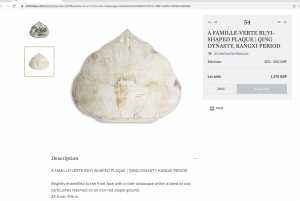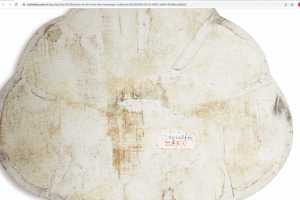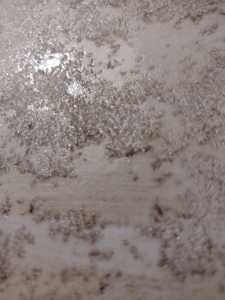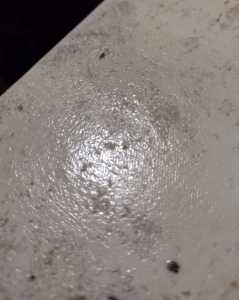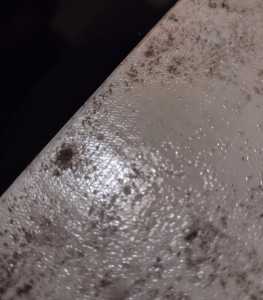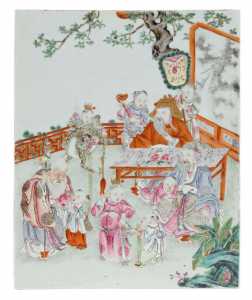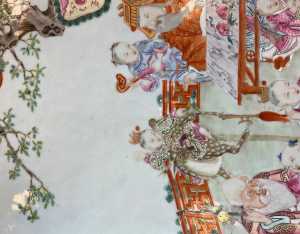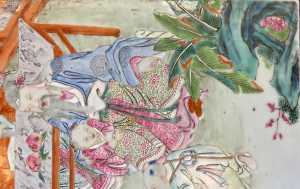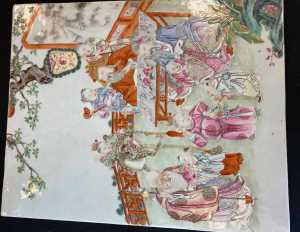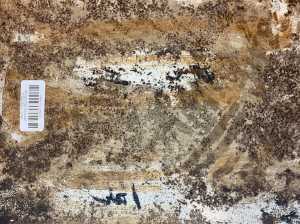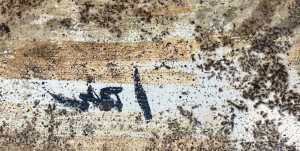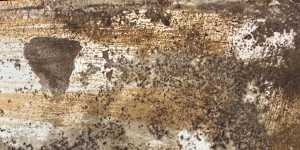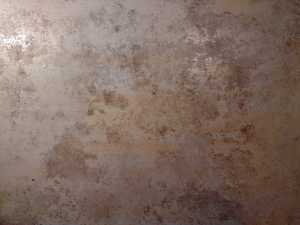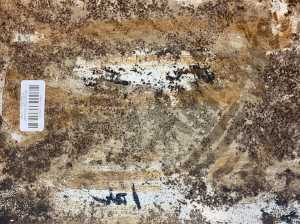The Chinese and Asian Art Forum. For Fans, Collectors and Dealers.
 Basic Rules For the BidAmount Asian Art Forum: Talk about whatever you want. You can even discuss and offer things that are for sale if they are authentic. Maximum image file size per post is 2 MB. Images of 700pxl x 700pxl are optimal if saved at a medium resolution. Be respectful of others and enjoy yourself. Click the YouTube link for a brief tutorial on using the forum. You can also EMBED Videos by cutting and pasting from You-Tube, Vimeo etc.
Basic Rules For the BidAmount Asian Art Forum: Talk about whatever you want. You can even discuss and offer things that are for sale if they are authentic. Maximum image file size per post is 2 MB. Images of 700pxl x 700pxl are optimal if saved at a medium resolution. Be respectful of others and enjoy yourself. Click the YouTube link for a brief tutorial on using the forum. You can also EMBED Videos by cutting and pasting from You-Tube, Vimeo etc.
NOTE: To post an item or add a new post, click open the category title from the FORUM LIST, and CLICK the Blue ADD TOPIC button.
@thomasumjohnson you are doing what you should be doing researching and debating this is how we all learn by learning we all benefit. Everyone’s goal is to save money and make money either to collect or sell but not get screwed. I have learned more being wrong than being right. Just FYI if it was a fare price it would be on my wall also.
@lotusblack Hello again Brian,
Sorry to bother you once more with questions but I was looking at the back of the Plaque and in regards to your comment on the tooling marks I assumed that the criss cross pattern on the back is what you were referring to. But I did start looking at the back of Kangxi plaques (again I am not saying mine is Kangxi!) but I noticed a similar symmetrical pattern to the back - more like a republic type figure that has been left to dry on fabric or something has imprinted the base.. So I just wanted some clarity concerning these tool marks, so I have taken a more detailed photo of the pattern to the back of the plaque for you to look at, and the Kangxi example, to compare.. Hope I'm not barking up the wrong tree...
@thomasumjohnson you are correct there have been many topics on the fabric marks on older pieces in both Chinese and Japanese ceramics. If your plaque had these same patterns that would be a good sign. The pattern on yours looks only vertical and linear. That’s not a good sign. If you notice the fabric pattern it’s knotted and uneven it look like fabric. The lines on your look perfectly straight no unevenness the gaps are identical like is was grove mechanically the groves look like they are under the kiln grit. So I ask myself if the kiln grit was caused during firing why would it be sticking to an unglazed surface? But it looks like glaze was added so did they add the glaze to stick the grit to the back. Investigation is turning more questions great study piece.
@lotusblack Thanks Brian,
Sorry it's hard to see as I'm taking photos in the dark over here in the U.K. but the marks are moving in both directions in a criss cross pattern. Like I say it's hard to see I'll need to take photos in the daylight, but as I say they aren't moving in one direction but in a criss cross pattern..
But yes more uniform and regimented..
@thomasumjohnson it’s hard to tell the cross hatching I would like to see comments from other members. I have not seen a glazed back on a plaque before either maybe other members have and can chime in. It’s looks pretty shiny from the photo you just took.
@thomasumjohnson I'm very glad you're keeping this discussion going and not just accepting others assessments as truth. As others have already pointed out, that is how we all learn, by questioning and debating through our observations and opinions. I lack the specific knowledge that some other members have in terms of certain telltale details that are tells for it's age, but I like your plaque, and it still would not surprise me to find out it dated to the early 20th C or even late 19th. But neither would it surprise me to learn it was a modern fake. So, for what it's worth, my jury is still out, and probably will be until Peter gives an opinion, so hopefully that can happen soon. At any rate, I'm enjoying everyone's contributions to the discussion. John
@johnshoe I'm very glad you're keeping this discussion going and not just accepting others assessments as truth. As others have already pointed out, that is how we all learn, by questioning and debating through our observations and opinions
Facts matter. Facts are not opinions, and are not subjective. I think there comes a time when the focus turns away from fact, and dives deep into obscure unfounded nuance.
This discussion already has two feet firmly planted in foot deep muddy nuance.
Not one shred of fact has been presented that this plaque is late 19th c. Plenty of innuendo, but not fact.
On the other hand, the details of the construction of the plaque and rendering of the design being wrong for 19th c. or earlier is fact. Unless you have the one and only example of the late 19th c. made in this manner, the facts stand.
I really hope nobody thinks that questioning and debating in this manner is constructive. Sorry...I don't think so. We should be investing our time expanding our knowledge of widely accepted principles used for assessing age/authenticity.
Instead, it really sounds like you're holding out hope some obscure finding will disprove all the fundamental rules of assessing porcelain age/authenticity, and that your plaque is genuinely antique.
Even if that were to happen, it would be a rare exception, and shouldn't be counted on when assessing future pieces.
Sorry...
Wet Blanket
OK, So I've found something interesting, which could be good news.. This C19th Plaque sold at Bonhams, which has grit over the back which could be glazed and is reasonably large without any support marks... The market also seemed to agree with the dating.. See more photos in the link to Bonhams
There are lots of photos in the listing on the Bonhams website:
https://www.bonhams.com/auctions/26840/lot/18/
@greeno107 @lotusblack @johnshoe
Infact you can see the back has been glazed.. see my previous post..
But it doesn't answer the question as to why the back was glazed... and how it was made?
@thomasumjohnson To quote my last post just before this plaque was referenced...
Even if that were to happen, it would be a rare exception, and shouldn't be counted on when assessing future pieces.
And, here we are. A VERY RARE example of a large (not as large as yours) famille rose plaque depicting boys... $40,000 sale price!
Look at the manner of the back, color, texture, and edges of your plaque as compared to the one example you found without the ridges. You think they look alike? No, they are not.
This might be hard to believe, but I wonder if the Bonham's plaque is actually 18th c. The rendering is quite exceptional, more in the taste of Qianlong. If Qianlong, then likely the porcelain was ground smooth on on the back before firing the glazes and slip. Just look at all the extra grit on the back to keep it from bonding to the kiln.
The back looks old, and the quality looks fantastic on the Bonham's plaque...so your plaque has what in common with this plaque? Oh yes, a back without ridges - that's it. Then your plaque must be late 19th c., right?
We can not pick and choose, but props to you for finding an old plaque without ridges on the back.
Best,
Tim
@greeno107 Sorry Tim, But I understood the fact there were no supports on the back and that the back was glazed with kiln grit stuck to it was the main reason that my plaque was regarded as a modern copy and had no age. Now I have discovered one with the same qualities you want to tell me that this discovery is meaningless. Obviously there is a lack of logic to your comment
@greeno107 And they do look very much alike, both have brown streaks running horizontally through the back underneath the kiln grit, both have kiln grit stuck to the glazed base and both have a smooth back with no support marks.
@thomasumjohnson I understood the fact there were no supports on the back and that the back was glazed with kiln grit stuck to it was the main reason that my plaque was regarded as a modern copy and had no age.
I never mentioned 'kiln grit' in my defence, but the absense of ridges on the back is still one of the main reasons why your plaque is not of the 19th c. It was also not the only reason why I said it was not of the period....let's not forget that.
I'll reiterate what I've said all along - the artistic qualities and construction need to matching 100% with known examples. Yours does not.
But, go ahead and pick and choose what qualities you want to acknowledge or ignore, but you'll soon find that kind of approach will lead you into buying many copies and fakes....rest assured.
One last thing...if you think that a large famille verte plaque depicting dragon & carp that was offered by a reputable auction house on LiveAuctioneers and other online websites was somehow overlooked by Chinese collectors, and because of a 'fast hammer' you stole it for well under $1,000, you are misleading yourself. There would have at least been a few left bids, but there weren't.
That should say something about given you are now comparing your plaque to one that sold for $40,000 USD.
Still, it's a pretty plaque.
Thanks for visiting "The BidAmount Asian Art Forum | Chinese Art"
If you sell on eBay, or have a shop feel free to post images and descriptions and links.
Check back often for discussion about the latest news in the Chinese art and antique world. Also find out about the latest Asian art auctions at Sotheby's, Christie's, Bonhams and Tajans.
Auction results for: fine porcelain, ceramics, bronze, jade, textiles and scholar's objects. As well as Japanese, Thai, Vietnamese and other Asian cultures.
Thank you,
Peter Combs
Topics and categories on The BidAmount Asian Art Forum | Chinese Art
Kangxi vases, Kangxi dishes and chargers, Kangxi ritual pieces, Kangxi scholar's objects, Qianlong famille rose, Qianlong enamels, Qianlong period paintings, Qianlong Emporer's court, Fine porcelain of the Yongzheng period. Chinese imperial art, Ming porcelain including Jiajing, Wanli, Xuande, Chenghua as well as Ming jades and bronzes.
The BidAmount Asian Art Forum | Chinese Art
A free Asian art discussion board and Asian art message board for dealers and collectors of art and antiques from China, Japan, Korea, Thailand, Cambodia, Vietnam and the rest of Asia. Linked to all of the BidAmount Asian art reference areas, with videos from plcombs Asian Art and Bidamount on YouTube. Sign up also for the weekly BidAmount newsletter and catalogs of active eBay listing of Chinese porcelain, bronze, jades, robes, and paintings.
The art of calligraphy - and for the ancient Chinese it certainly was an art - aimed to demonstrate superior control and skill using brush and ink. Calligraphy established itself as one of the major Chinese art forms during the Han dynasty (206 BCE - 220 CE), and for two millennia after, all educated men were expected to be proficient at it.
The Museum’s collections of Asian art span nearly five millennia and encompass the cultures of China, the Himalayas, India, Japan, Korea, and Southeast Asia. In 2007, the Museum launched an initiative to create dedicated galleries for the collection, beginning with a gallery for the arts of Korea ...
Chinese art is full of symbolism, in that artists typically seek to depict some aspect of a totality of which they are intuitively aware.
China Online Museum is the finest online museum of Chinese art. It features Chinese calligraphy, painting, ceramics, bronzes, carving, and other artworks.
Chinese Ceramics & Works of Art. Overview Upcoming auctions Contacts Auction results ... Christie’s sales of Chinese ceramics and works of art showcase centuries of Chinese history. Held throughout the year in London, New York, Paris and Hong Kong, they attract a wide audience of collectors and connoisseurs vying for pieces as diverse as ...
Explore Asian Art Week. Contact the Specialist Department. Chinese Paintings ... Senior Specialist, Head of Sale. [email protected]. Tel:+1 212 641 5760. Bid in-person or online for the upcoming auction:Fine Chinese Paintings on 10 September 2019 at New York. Bid in-person or online for the upcoming auction:Fine Chinese Paintings on 10 ...
Discover an abundance of must-see art from all corners of a vast continent at Christie’s NY Asian Art Week. From contemporary classical and Chinese paintings to works with exemplary provenance from the Art Institute of Chicago, our Rockefeller Paza galleries will be full of ancient treasures and contemporary masterworks in a salute to the vibrant arts of Asia.
Sold to benefit The Art Institute of Chicago’s Asian Art Acquisition Fund, the sale features 84 lots with a focus on Ming and Qing porcelains, and offers a rare insight into the taste for collecting Chinese ceramics and works of art in the Midwest from the end of the 19th century through the 1980s. Highlights include two Wanli wucai garlic-head vases, a Qianlong mark and period, blue and ...
Specialist, Chinese Paintings, Christie's London Dr Malcolm McNeill is a Specialist in Chinese Paintings at Christie’s, based in London. He previously worked as an assistant curator of the Chinese collections and the Victoria and Albert Museum in London, as a researcher at the British Museum, and as a translator and tour guide at the National Palace Museum in Taipei.
The Christie's Education 2020 Conference: The Chinese Art Market 18 Jun 2019 Christie’s Education is delighted to announce our first international academic conference in Asia which will take place in Hong Kong from 26-27 November 2020 at the Hong Kong Convention and Exhibition Centre and will run in parallel with Christie’s Hong Kong Autumn Auctions.
The summer Chinese Art sale in Hong Kong will feature works of art from several private collections, including Qing porcelains and textile from the collection of the legendary Chinese art dealer A. W. Bahr (1877–1959), fine gilt bronze Buddhist sculptures from an old Hong Kong collection, an East Asian collection of Qing dynasty wine cups and jades, and a Japanese collection of Song ceramics ...
Sotheby's Chinese Works of Art Department holds two auctions each year in London, New York, Hong Kong and Paris.
Chinese Art - View Auction details, bid, buy and collect the various artworks at Sothebys Art Auction House.
With more than 340 Chinese works of art dating from the Neolithic to the Republic periods, highlights of this sale include a selection of Qing Imperial monochromes from the collection of Arnold and Blema Steinberg, early ceramics from the Art Institute of Chicago and Chinese porcelain and works of art from the collection of Henry Arnhold.
Results: Sotheby's Asia Week achieved $52.4 million in six strong auctions, exceeding pre-sale estimates. With 76.5% of lots sold and 60.3% of lots surpassing high estimates, the Asian art sales at Sotheby's indicate continued collector interest in the finest works of art from China, India and and the Himalayas.
Today's sale of Important Chinese Art will proceed as planned with sessions at 10 AM and 2 PM EDT. Sotheby's will be monitoring the weather conditions throughout the day and will be available to coordinate alternative bidding options should conditions make it difficult for clients to attend the auction in person.
Bonhams Chinese Art department is renowned for offering the finest works of art representing the richness and breadth of China's artistic heritage, particularly Imperial porcelain, white and spinach green jades, cloisonné and Buddhist art. Specialised international auctions are held globally, including London, Hong Kong and San Francisco.
Bonhams : Chinese Works of Art We use cookies to remember choices you make on functionality and personal features to enhance your experience to our site. By continuing to use our site you consent to the use of cookies. Please refer to our privacy and cookie policies for more information.
Bonhams Fine Art Auctioneers & Valuers: auctioneers of art, pictures, collectables and motor cars. We use cookies to remember choices you make on functionality and personal features to enhance your experience to our site. By continuing to use our site you consent to the use of cookies. ... Chinese Art (US) General enquiries
Bonhams : Fine Chinese Art We use cookies to remember choices you make on functionality and personal features to enhance your experience to our site. By continuing to use our site you consent to the use of cookies. Please refer to our privacy and cookie policies for more information.
Bonhams Fine Art Auctioneers & Valuers: auctioneers of art, pictures, collectables and motor cars Bonhams : Asian Art We use cookies to remember choices you make on functionality and personal features to enhance your experience to our site.
Bonhams are international auctioneers of fine Chinese and Japanese art. We specialise in rare Imperial and Export Chinese ceramics and works of art, as well as Japanese ceramics, fine and decorative works of art from the Neolithic Period to the 20th century. View on map
Bonhams Fine Art Auctioneers & Valuers: auctioneers of art, pictures, collectables and motor cars. We use cookies to remember choices you make on functionality and personal features to enhance your experience to our site. By continuing to use our site you consent to the use of cookies. ... Asian Art Bonhams. Work. 22 Queen St.
